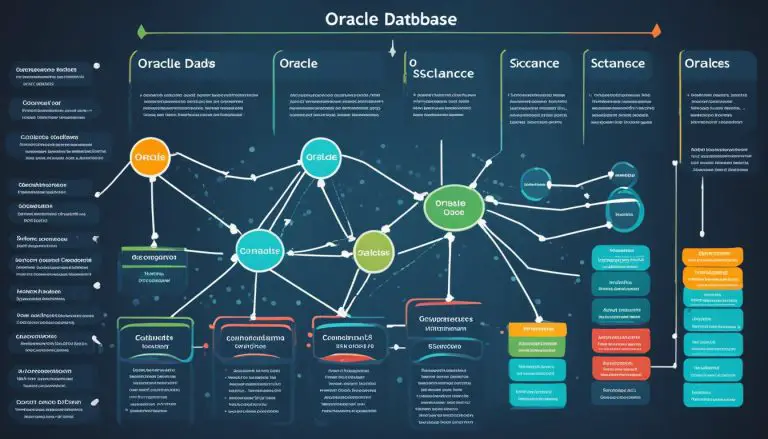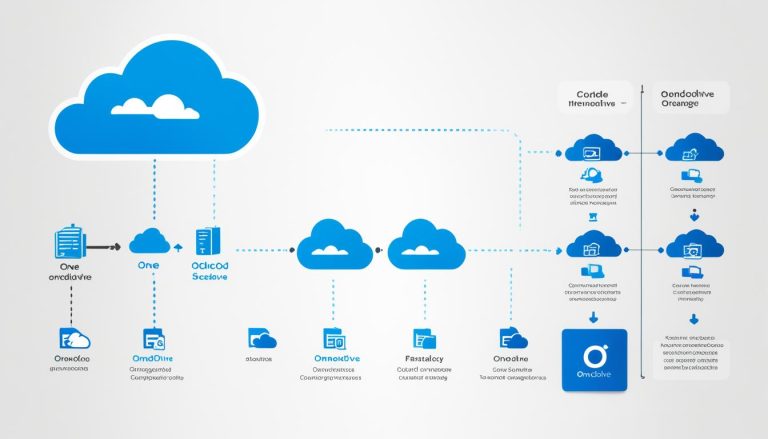Understanding Snowflake: Cloud Data Platform Explained
Hello, I’m here to provide you with a comprehensive explanation of Snowflake, a powerful cloud data platform. In today’s digital era, organizations are dealing with vast amounts of data that require efficient storage and processing solutions. Snowflake emerges as a leading player in this field, offering a range of features and capabilities that address the challenges of big data.
Snowflake is not just a data warehouse but a cloud data platform that operates on top of AWS or Azure infrastructure. It provides a robust storage and computing environment capable of handling massive volumes of data. Whether you’re working with structured or semi-structured data, Snowflake offers the necessary tools and functionalities to simplify data management and analysis.
Developed in 2012, Snowflake is a fully managed SaaS (Software-as-a-Service) platform that serves as a one-stop solution for all your data needs. It acts as a unified platform for data warehousing, data lakes, data engineering, data science, and secure data sharing. By consolidating these functionalities, Snowflake eliminates the complexities of integrating multiple systems, making it easier for organizations to focus on deriving insights from their data.
Now, let’s dive deeper into the inner workings of Snowflake and explore its design, architecture, and unique features.
Key Takeaways:
- Snowflake is a cloud data platform that combines storage and computing capabilities for handling massive volumes of big data.
- It operates on top of Amazon Web Services (AWS) or Microsoft Azure infrastructure.
- Snowflake provides a unified solution for data warehousing, data lakes, data engineering, data science, and secure data sharing.
- Its unique features include separation of storage and compute, scalable compute, support for third-party tools, and seamless integration with third-party data.
- Snowflake’s decoupled architecture, elastic scalability, and support for semi-structured data sets it apart from other data warehousing solutions.
How Snowflake Works: Design and Architecture
In order to understand the inner workings of Snowflake, it is important to delve into its design and architecture. Snowflake is built with three key components that work together seamlessly to provide a powerful cloud data platform.
1. Cloud Services
The first component of Snowflake is its cloud services, which handle various critical functions. These services manage authentication, infrastructure, query parsing and optimization, metadata, and access control. They use the standard ANSI SQL language and maintain certifications like PCI DSS and HIPAA, ensuring the highest level of security and encryption for sensitive data.
2. Query Processing
Snowflake’s compute layer comprises virtual cloud data warehouses, allowing users to analyze data through queries. Each virtual warehouse functions as an independent cluster, providing efficient workload concurrency. This means that multiple users can seamlessly run complex queries simultaneously without any performance degradation.
3. Database Storage
The database storage component of Snowflake is where structured and semi-structured data sets are stored for processing and analysis. Snowflake takes care of all aspects of data storage, including organization, structure, metadata, file size, compression, and statistics. This comprehensive approach ensures optimal handling of data, resulting in high performance and efficient utilization of storage resources.
In summary, Snowflake’s design and architecture utilize cloud services, query processing, and database storage to create a robust and scalable data platform. By separating these components, Snowflake achieves remarkable flexibility and performance, making it an ideal choice for cloud data warehousing.
Note: The image above provides a visual representation of Snowflake’s architecture, showcasing the interaction between its various components. It exemplifies the design principles discussed in this section.
Benefits of Choosing Snowflake
When it comes to cloud data warehousing, Snowflake offers a range of benefits that make it a compelling choice for organizations. Here are some key advantages of using Snowflake as your cloud data platform:
- Instant, nearly unlimited scalability: Snowflake’s architecture allows for high-speed and scalable compute, enabling organizations to handle as many concurrent users and workloads as needed. This means you can easily scale your data operations without worrying about performance issues or limitations.
- Automation made easy: Snowflake automates various aspects of data management, including data security, governance, availability, and data resiliency. By automating these processes, Snowflake improves operational efficiency, reduces downtime, and frees up valuable resources for other critical tasks.
- Secure and easy data sharing: With Snowflake, you can eliminate the need for complex extract, transform, load (ETL) processes and data silos. Snowflake provides a secure and easy way to share data between different teams and stakeholders, ensuring seamless collaboration and data-driven decision-making.
- Third-party data integrations: Snowflake’s Data Marketplace offers a wide range of third-party data sets that you can seamlessly integrate into your workflows. This allows you to enrich your data with external sources and gain valuable insights for your business.
- Flexible pricing model: Snowflake offers flexible pricing options to suit your organization’s needs. Whether you prefer on-demand per-second pricing or pre-purchased capacity options, Snowflake allows you to choose the pricing model that best aligns with your budget and usage requirements.
Overall, Snowflake’s advanced features, such as its scalability, automation, secure data sharing, third-party integrations, and flexible pricing, make it a powerful and versatile cloud data platform. By choosing Snowflake, organizations can unlock the full potential of their data and gain a competitive edge in an increasingly data-driven world.
Take a look at the table below for a quick summary of the benefits of choosing Snowflake:
| Benefits | Description |
|---|---|
| Instant, nearly unlimited scalability | Snowflake’s architecture enables high-speed and scalable compute, supporting as many concurrent users and workloads as needed. |
| Automation made easy | Snowflake automates data management, security, governance, availability, and data resiliency, improving operational efficiency and reducing downtime. |
| Secure and easy data sharing | Snowflake eliminates the need for ETL and data silos, enabling secure data sharing between different teams and stakeholders. |
| Third-party data integrations | Snowflake’s Data Marketplace offers third-party data and seamless integration with Snowflake customers’ workflows through data services and third-party applications. |
| Flexible pricing model | Snowflake offers multiple pricing options, including on-demand per-second pricing and pre-purchased capacity options, allowing organizations to choose a pricing model that suits their needs. |
Snowflake’s Stock Price Growth
Snowflake (NYSE: SNOW) made its debut on the stock market in September 2020 and has since witnessed considerable growth in its stock price. This surge in value can be attributed to various factors, including Snowflake’s innovative technology and its impressive customer base, which includes renowned companies such as Walmart and Salesforce.
As organizations increasingly recognize the importance of data-driven decision-making, Snowflake’s cloud data platform has gained significant traction. Its ability to handle massive volumes of data and provide scalable computing power has positioned Snowflake as a leader in the industry, contributing to its stock price growth.
“Snowflake’s successful IPO and subsequent stock price growth reflect the market’s confidence in its cloud data platform. The company’s strong customer base and its unique offerings make it an attractive investment option.”
– Analyst Name, Leading Financial Institution
However, it is important to note that some analysts express concerns regarding the sustainability of Snowflake’s stock price growth. As the market for cloud data warehousing becomes more competitive, other providers may pose a challenge to Snowflake’s dominance. This potential competition and the industry’s evolving landscape should be considered when evaluating Snowflake’s valuation and long-term prospects.
Despite these concerns, Snowflake’s stock price growth highlights the significance of its cloud data platform and its ability to meet the growing demands of organizations in the digital age.
Snowflake’s Unique Features
Snowflake sets itself apart from other data warehousing solutions with its unique features and architecture.
Decoupled Architecture
Snowflake’s architecture separates storage, compute, and cloud services, providing unparalleled scalability, flexibility, and performance. This decoupling allows for independent scaling of resources and efficient allocation of IO, memory, and CPU resources.
Elastic Scalability
One of Snowflake’s key features is its ability to scale capacity and performance on demand, eliminating the need for upfront capacity planning and accommodating varying workloads seamlessly. This elastic scalability ensures optimal performance even with rapidly changing data volumes and query loads.
Handling Semi-Structured Data
Snowflake natively supports a wide range of semi-structured data formats like JSON, Avro, XML, and Parquet. This native support allows for schema-less storage, making it easy to store and query diverse data types. Organizations can easily integrate structured and semi-structured data within Snowflake, facilitating complex analyses and insights.
Optimized Performance and Resource Management
Snowflake’s architecture dynamically adapts configurations and scales resources independently. This optimization ensures that IO, memory, and CPU resources are allocated efficiently, resulting in enhanced query performance and improved resource management.

With its decoupled architecture, elastic scalability, support for semi-structured data, and optimized performance and resource management, Snowflake offers a powerful and versatile data warehousing solution for organizations dealing with large volumes of data.
Snowflake Data Cloud: A Unified Solution
Snowflake’s data cloud is a comprehensive and unified solution that caters to a variety of data workloads and use cases. With its powerful features and capabilities, Snowflake empowers organizations to efficiently manage and leverage their data assets. Here are some key areas where Snowflake excels:
Data Engineering
Snowflake supports data integration and processing tools, making it seamless to handle ELT-style data engineering tasks. With scalable virtual warehouses, organizations can easily manage and process large volumes of data while maintaining high performance.
Data Warehouse
Snowflake provides a cloud-based data warehouse platform that offers low maintenance administration and real-time capabilities for data ingestion, transformation, and querying. This enables organizations to quickly and effectively derive valuable insights from their data.
Data Lake
Integrating Snowflake into a cloud-based data lake allows for schema-less storage and querying of both structured and semi-structured data. This flexibility provides organizations with the ability to efficiently manage and analyze diverse data sets.
Data Science
Snowflake is well-suited for data science tasks, offering scalability and seamless integration with data processing and analytics tools. This enables organizations to efficiently process and analyze large volumes of data for machine learning, advanced analytics, and model training.
Data Applications
The multi-cluster warehouses in Snowflake ensure excellent performance even with thousands of concurrent queries, making it ideal for data-intensive applications. Organizations can build and deploy data-driven applications that rely on Snowflake for efficient data processing.
Data Exchange
Snowflake enables secure and easy data sharing within the Snowflake database and through its Data Marketplace. Organizations can monetize their data assets and seamlessly exchange data with other stakeholders, expanding their reach and unlocking new opportunities.
With Snowflake’s data cloud, organizations can leverage the platform’s versatility to support various data workloads and unlock new insights. Whether it’s data engineering, data warehousing, data lakes, data science, data applications, or data exchange, Snowflake provides a unified solution to address diverse data needs.
Stay tuned for the next section as we explore the stock price growth of Snowflake and its unique features.
Conclusion
Snowflake, the leading cloud data platform, offers a revolutionary solution for organizations grappling with massive volumes of data. Its decoupled architecture, elastic scalability, support for semi-structured data, and extensive features make it a standout choice for data warehousing needs.
However, it’s important to consider the sustainability of Snowflake’s rapid growth and potential competition when evaluating investment options. The stock has experienced significant price growth since its IPO in 2020, fueled by innovative technology and a strong customer base. Nonetheless, analysts caution that the evolving market dynamics could impact Snowflake’s long-term success.
Overall, Snowflake provides a powerful and comprehensive cloud data platform that addresses the storage, analysis, and sharing needs of modern enterprises. Its scalability, security, and flexibility make it an ideal solution for organizations looking to leverage the full potential of their data.
In conclusion, Snowflake’s advanced features, coupled with its commitment to innovation, position it as a game-changer in the data warehousing landscape. As the demand for efficient data management grows, Snowflake continues to evolve and adapt, ensuring that businesses can effectively harness the power of their data while staying ahead in an increasingly competitive market.
FAQ
What is Snowflake?
Snowflake is a cloud data platform that serves as a data warehouse, offering storage and computing capabilities for handling massive volumes of big data.
How does Snowflake work?
Snowflake works with three main components: cloud services for authentication and infrastructure management, query processing for data analysis, and database storage for structured and semi-structured data sets.
What are the benefits of choosing Snowflake?
The benefits of choosing Snowflake include instant scalability, automation, secure data sharing, third-party data integrations, and a flexible pricing model.
How has Snowflake’s stock price performed?
Snowflake went public in September 2020 and has experienced significant stock price growth, thanks to its innovative technology and strong customer base.
What are Snowflake’s unique features?
Snowflake’s unique features include its decoupled architecture, elastic scalability, support for semi-structured data, and optimized performance and resource management.
What is Snowflake’s data cloud?
Snowflake’s data cloud provides a unified solution for various data workloads and use cases, including data engineering, data warehousing, data lakes, data science, data applications, and data exchange.
- About the Author
- Latest Posts
Mark is a senior content editor at Text-Center.com and has more than 20 years of experience with linux and windows operating systems. He also writes for Biteno.com






